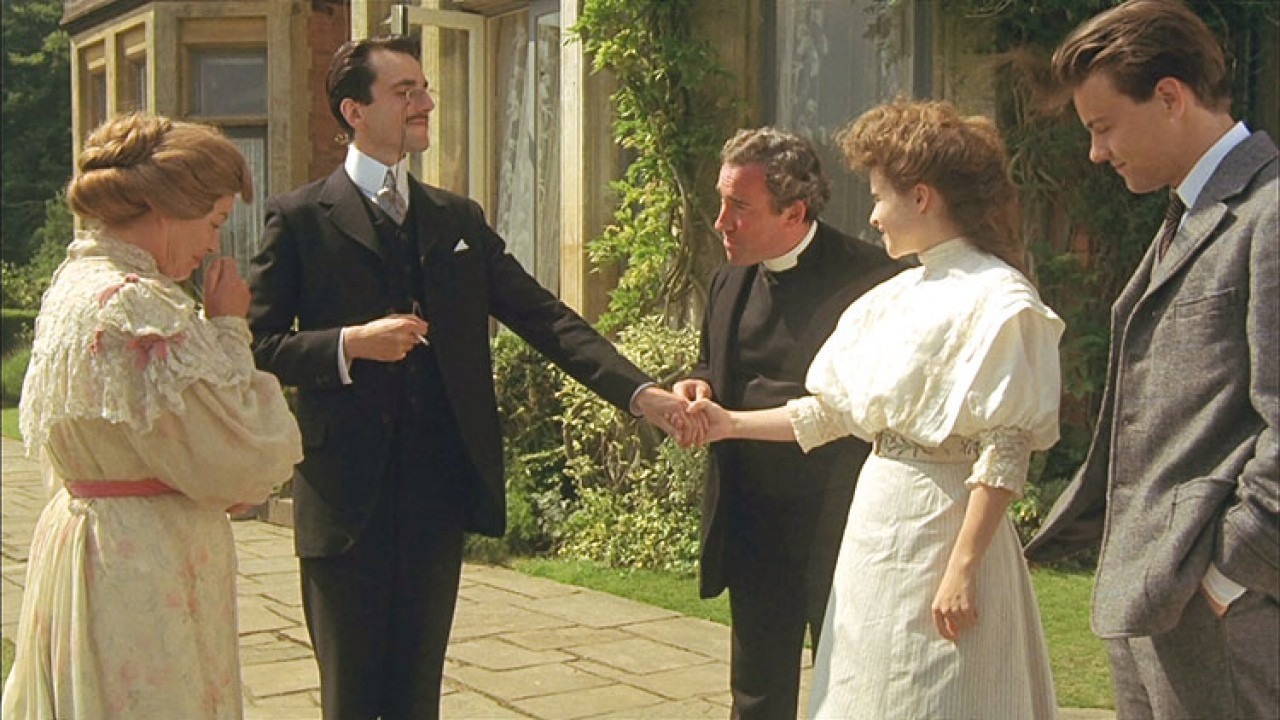A Room with a View (1985)

A Room with a View (1985) is a British romantic drama directed by James Ivory and produced by Ismail Merchant, with a screenplay adapted by Ruth Prawer Jhabvala from E. M. Forster’s 1908 novel. The film explores themes of love, social conventions, and personal freedom against the backdrop of Edwardian England and the Italian countryside. With its compelling narrative, stunning cinematography, and remarkable performances, the film remains a beloved classic in the genre of period romance.
The story revolves around Lucy Honeychurch, played by Helena Bonham Carter, a young woman from a respectable English family who is torn between two suitors. On a trip to Italy, Lucy stays at a pension where she meets George Emerson (Julian Sands), a passionate and free-spirited man who challenges her conventional views on love and life. This encounter ignites a complex emotional conflict in Lucy, as she is already promised to the more proper but unexciting Cecil Vyse (Daniel Day-Lewis). The film explores Lucy’s struggle between following her heart and adhering to societal expectations.
One of the key elements of A Room with a View is its exploration of the class and social conventions of Edwardian England. Lucy’s world is shaped by the rigid expectations of society, especially regarding love and marriage. The contrast between the two men vying for her affection—Cecil, the ideal gentleman, and George, the unconventional and passionate outsider—highlights the tension between tradition and personal desire. This struggle between duty and personal freedom is central to the film’s themes and reflects broader issues of social conformity during the time period.

The cinematography of A Room with a View is stunning, with the beautiful landscapes of Italy providing a picturesque backdrop to the story’s emotional depth. The scenes set in the Italian countryside are filled with vibrant colors, lush scenery, and an air of romanticism, mirroring the inner turmoil of Lucy as she navigates her conflicting desires. In contrast, the scenes set in England are more restrained and formal, visually reinforcing the societal constraints that Lucy must contend with. The use of light and color throughout the film adds an extra layer of meaning, emphasizing the tension between the character’s inner worlds and the outward expectations placed upon them.

The performances in the film are exceptional, with Helena Bonham Carter delivering a breakthrough role as Lucy Honeychurch. Her portrayal captures the complexities of a young woman on the brink of self-discovery, torn between the safety of tradition and the allure of true love. Julian Sands is equally captivating as George Emerson, bringing a sense of charm, depth, and sincerity to his character. The supporting cast, including Daniel Day-Lewis as the pompous Cecil, adds to the film’s rich texture and provides a wonderful balance of humor and drama.

In conclusion, A Room with a View (1985) is a beautifully crafted film that successfully adapts E. M. Forster’s novel into a rich, emotional narrative about love, choice, and social constraints. With its brilliant performances, exquisite cinematography, and thoughtful exploration of societal norms, the film remains a timeless classic in the genre of romantic drama. James Ivory’s direction, combined with the talented cast and crew, creates a movie that not only captures the heart but also offers deep reflections on the personal struggles of love and identity.











